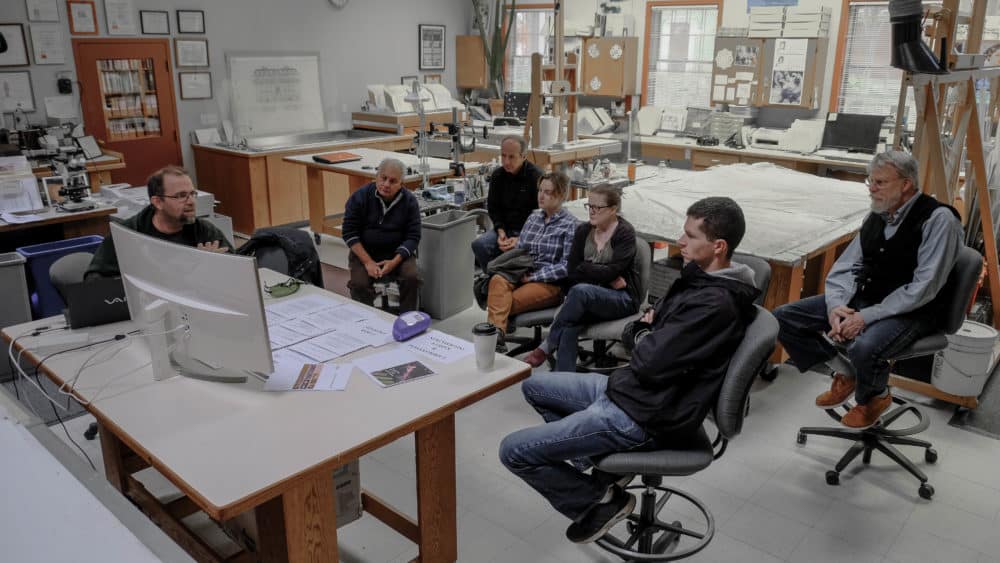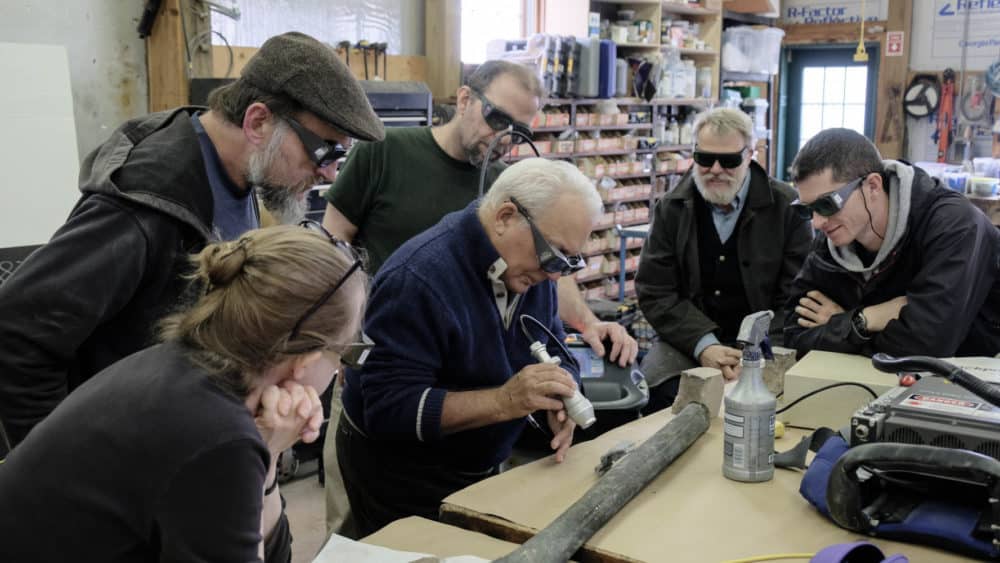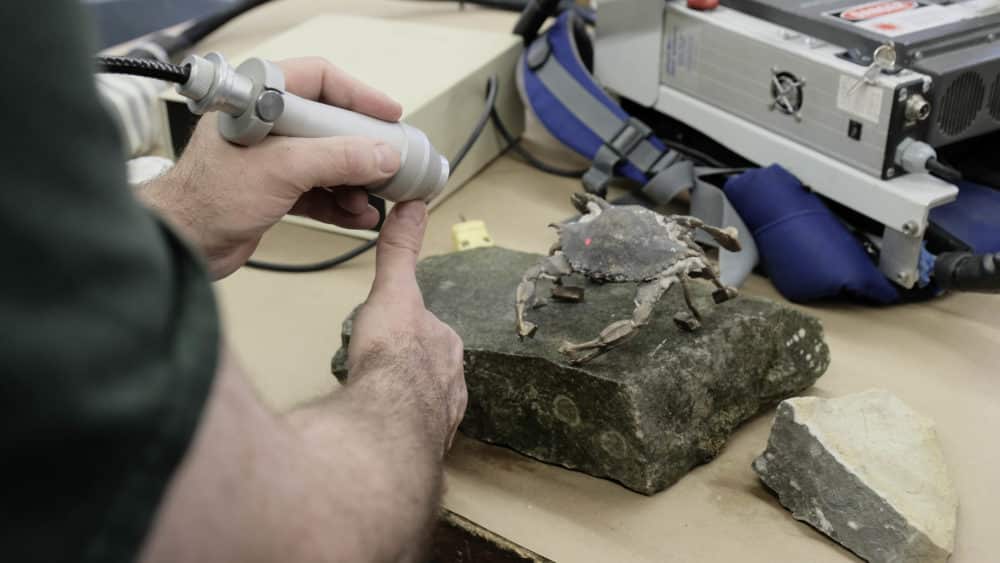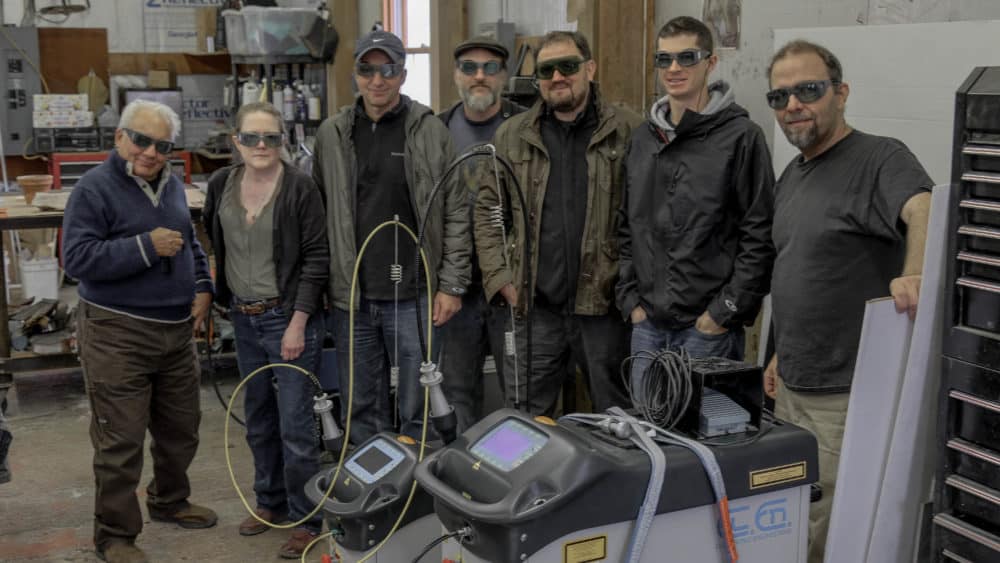Sometimes, the best solution for a problem is to shoot it with lasers.
For over thirty years, historic preservationist and art conservators have been doing just that – preserving architecture and works of art with the use of lasers. While historically the technology has been employed for cleaning stone, the kind, quality, and size of lasers are constantly adapting and improving to meet specialized needs. In the realm of cultural heritage, lasers have been explored to treat a range of materials including, but not limited to: stone, metal, ceramic, painted surfaces and easel paintings, parchment, and paper.

This November the conservation staff at McKay Lodge had an opportunity to learn about the latest laser cleaning artwork technology with a workshop taught by conservator Adam Jenkins at our art conservation facilities in the Greater Cleveland area. Adam Jenkins is a Philadelphia-based Objects conservator who currently owns and operates his own private practice. He has also worked with Materials Conservation Co. and the Philadelphia Museum of Art. He has extensive knowledge of laser technology as well as experience operating lasers to treat architecture and works of art. Adam shared his particular knowledge of lasers produced by the El. En. Group. The high-tech group has a presence on five continents, and it has sold more than 35,000 laser sources worldwide. Light for Art, a sector of the El.En. group, specializes in laser systems for the conservation of cultural heritage.
For the laser workshop at McKay Lodge Conservation Lab, Jenkins began the one-day workshop with a brief lecture on laser safety and the basic principles of laser operation and technology. He also described various laser units and how they could benefit our company. While some of our staff already had experience with laser cleaning, the lecture accommodated both advanced users and laser novices. Jenkins also provided literature beforehand regarding recent studies in laser cleaning of art and artifacts of various media. This was followed by arguably the best part of the workshop, using the laser itself.

The laser workshop was moved from the main lab into the small shop since we could control access and had more working space. McKay Lodge Conservation staff brought samples to the workshop of materials and condition issues we regularly encounter in the field. These samples were adhesive remnants on stone or metal, painted stone or metal, corroded metal, tarnished silver, dirty or biological growth on stone, grimy gilded surfaces, and aged varnishes on easel paintings. Conservator Adam Jenkins brought several laser units including the EOS combo and EOS QS.

With our goggles on and safety signage in place, we got to work!
For some of the sample materials, the laser quickly and seamlessly ablated foreign material on the surface, but laser cleaning is not the best application for every material or condition issue. The technology is, however, an incredible tool for the conservator’s arsenal. In general, the McKay Lodge Conservation staff found that laser cleaning provided a high degree of control and precision, allowing an operator to pinpoint an area of treatment while not impacting the surrounding material. Laser cleaning of art and artifacts also has the bonus of not requiring any chemicals or abrasive materials.
Successful laser treatment of art and artifacts has been reported throughout the United States and Europe, and more cost-effective units are becoming readily available. While other forms of treatment are sometimes the better suited for a project, lasers can be the best tool for certain applications. Laser cleaning does require adequate ventilation and safety precautions, but the treatment creates little to no waste during the process. While the method can be more expensive than traditional treatment approaches, the speed of laser cleaning treatment can counteract the labor and time cost of slower methods.

Needless to say, we were impressed with Conservator Adam Jenkins as well as the El.En. Laser systems.
